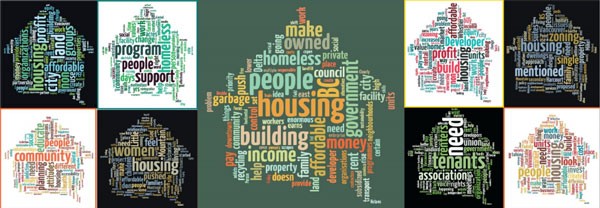
It is once again that time of year when the City of Vancouver conducts their Annual Homeless Count in Metro Vancouver. As an ongoing initiative since 2010, the City of Vancouver has been conducting an annual count to help estimate the number of homeless, obtain an accurate demographic profile of the population, and to help identify common trends compared to previous years. The most recent data collected was the 2014 Homeless Count in the Metro Vancouver Region, conducted by the Greater Vancouver Regional Steering Committee on Homelessness (RSCH) every three years – an initiative supported by Metro Vancouver, Government of Canada, City of Vancouver, Vancouver Foundation, Real Estate Foundation, Surrey Homeless & Housing Society, and Translink. The data collected from these counts assists government bodies and organizations with policy development, planning, prioritizing programs and services to address the needs of the people.
This year will be particularly important in addressing the current status on housing and homelessness in the city. Back in 2008, Mayor Gregor Robertson and Council had pledged to end street homelessness by 2015, and increase affordable housing choices for all Vancouverites. According to the most recent count results, the city’s overall homeless population, both ‘visibly’ and ‘invisibly’ homeless, has increased since the original promise had been made.
In 2011, 2012, and 2013, Mayor Robertson’s initiatives had placed a greater number of homeless inside shelters and off the streets, however, the effects did not last for long. Data collected from the 2014 count indicated that homelessness has reached an all-time high, and brings into question the efficacy of Mayor Robertson’s initiatives.
Housing and homelessness are two issues that go hand-in-hand in Vancouver. The City of Vancouver initiated their Housing and Homelessness Strategy 2012-2021 as an initiative to end homelessness and increase affordable housing choices for all residents of the city. This includes investing in more accessible, affordable and sustainable housing for seniors, families and disabilities – regardless of their income level. Homelessness can range from living on the streets to struggling with inadequate or unaffordable housing, making it deeper than a one-dimensional issue.
Most homeless counts underestimate the number of people who are “homeless” defined as those who do not have a place of their own, where they could expect to stay in for more than 30 days. Many homeless choose to live in public spaces, which are an essential component to their daily lives. Public spaces provide a place to sit, sleep, eat, socialize, live and feel safe around others.
Homelessness can go beyond living on the street, including those who have no physical shelter, temporary residence in emergency shelters, or have no fixed address and live in someone else’s home, at a hospital, jail or detox facility. Hence, it is important to remind ourselves that homelessness is always larger than the numbers presented on the page.
This year the Homeless Count by the City of Vancouver will take place from March 23-24, 2015. The City of Vancouver is currently still looking for volunteers to help with the street count on March 24, and help with preparations for the entire event.
If you are interested in signing up to be a volunteer, please visit the link and complete the online survey: http://vancouver.fluidsurveys.com/s/HomelessCount2015/.
**
Isabelle Kim is a Vancouver-based Communications & Design B.A. from SFU, involved in past public space and placemaking projects. She is an urban planning enthusiast obsessed with urban design and architecture.




